
April has brought about huge volatility as tariffs kicked in and the possibility of escalating tensions between US and China took a step forward
April 2nd was called ‘’liberation day’’ by Donald Trump, as he announced sweeping global tariffs aimed at addressing and putting right perceived unfair trade policies towards the US from its global trading partners.
This included a baseline 10% tariff, with higher reciprocal tariffs imposed on those with significant trade surpluses with the US, including 20% on the EU and an additional 34% on top of the existing 20% on Chinese goods, taking the effective rate to 54%.
These came into effect on the 5th April creating market turmoil, with Global stock markets plunging and posting their worst performances since the COVID pandemic, Oil coming under pressure due to fears over demand on the back of a global economic slowdown, Gold continuing to soar as investors looked to the precious metal as a safe haven and huge volatility across the forex market.
The Trump administration responded by suspending all tariffs for 90 days, apart from those imposed on China, as it gave time for countries to renegotiate trade agreements with the US on more favourable terms.
Whilst this has allowed the market to settle a little, the threat of a trade war between the 2 world’s biggest economies still looms large, as the standoff between Washington and Beijing on tariffs continues. Tit-for-tat retaliatory tariffs have been imposed by both, and currently stand at 125%, with US raising tariffs on Chinese imports to 145%, effectively suspending trade between the two countries. In fact, the WTO projects an 80% drop in US-China trade for the year.
In this month’s report, we will take a more granular look at the effect the ongoing geopolitical issues are having on 5 individual currencies and 5 sectors that have been heavily affected by the tariffs. We will also talk about the things to look out for that will have an impact on them going forward. It must be noted that this is an ever-evolving issue, and the landscape can change very quickly, so we must remain dynamic and aware of events that can change market sentiment.
I fully expect there to be many new trade agreements taking shape over the coming weeks and months, but this does not mean there will not be a big shift in the way global trade is conducted going forward. I’m sure there will be new relationships, supply chains and opportunities out there. I’m sure there will continue to be some bumps along the way as the new landscape for global trade takes shape.
Gold
Gold continues to make new all-time highs as investors seek safe-haven assets amidst the ongoing geopolitical uncertainties. Having broken through the $3,000/oz barrier in mid-March, it continues to move higher with current highs around $3,500/oz.
Whilst we have seen a pullback from this level after recent comments from the US Treasury Chief, we should continue to look to buy on dips until there is a major shift in the events driving Gold higher.
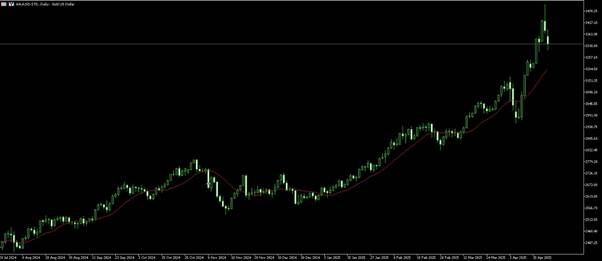
Fig. 1: Daily Gold Chart showing it hitting highs of $3,500/oz
Oil
Oil has come under extreme pressure in recent weeks, breaking a key support level around $65.00 and reaching a 4-year low at the start of April. Whilst the weaker USD has helped ease some pressures, these are far outweighed by the concerns that the impact tariffs could have on the global economy.
A slowing of the global economy will reduce the demand for oil, and there are fears that any protracted trade war between the US and China will have a negative impact on China’s manufacturing and export sectors, which would reduce their need for crude oil, hitting demand hard again.
Any easing of tensions or tariffs between the US and China would ease the pressure on Oil.
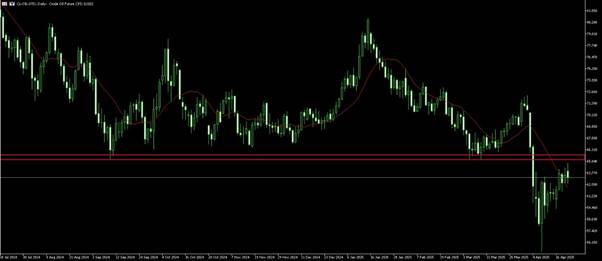
Fig. 2: Daily Oil Chart showing it breaking the key support level just above $65.00
Forex
USD
The USD has continued to show weakness in recent weeks and the decline has accelerated with the DXY hitting 3-year lows since the tariffs were introduced at the start of April. This is after the IMF downgraded its forecast for US growth to 1.8% in 2025.
The USD was further weakened by investors moving away from the USD into more stable currencies seen as safe havens such as the JPY, as the fallout from the tariffs unsettled global investors.
The USD outlook is complicated as the FED will need to balance the potential inflationary issues caused by the imposition of tariffs against any potential slowdown in the US economy. We must therefore continue to keep a close eye on how the ongoing trade tensions play out. If tensions continue and there is more evidence of a slowdown in the US economy, then we could continue to see further weakness.
If trade tensions ease and there are positive signs on the economy, then we could see USD stabilise and potentially strengthen again.
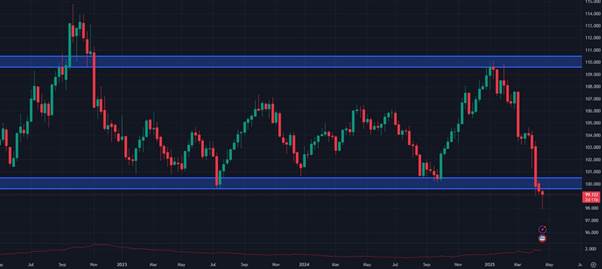
Fig.3: Weekly Chart of the DXY (USD Basket) showing it breaking support and making new 3-year lows
EUR
The EUR benefited from the tariffs imposed by the Trump administration, as investors saw it as a more stable alternative to the USD amid concerns over US policy. The EU have also taken what are perceived as positive steps to mitigate potential slowing in GDP growth through its fiscal measures, including the monetary policies pursued by the ECB and Germany’s investment aimed at boosting its own economy.
The EUR has appreciated more than 11% against the USD since the start of March and could continue to appreciate modestly against the USD if the greenback remains under pressure due to the US administration’s policies.
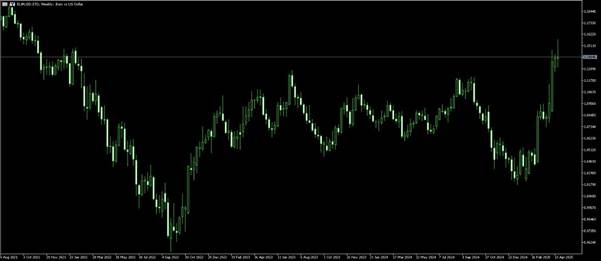
Fig.4: Weekly Chart of the EURUSD showing the EUR recovering against the USD after a sustained period of weakness.
CAD
Whilst the CAD was not hugely impacted by the tariffs announced on the 2nd April, it had already experienced the wrath of the Trump administration earlier in the year when they were hit with 25% tariffs on most products, creating a sharp sell-off in the CAD to a 5-year low.
The Bank of Canada has responded by halting rate cuts, which has boosted the CAD alongside the weakening of the USD in recent weeks, stabilising CAD against the USD.
The outlook for Canada will depend on how the trade war with its biggest trading partner develops. With an export-driven economy and 75% of its exports directed to the US, there are likely to be headwinds ahead while the two neighbours reach a new agreement.
AUD
The AUD was indirectly hit hard initially by the geopolitical issues and global tariffs. Although Australia was not a primary target, its trading relationship with China and the escalation of tensions between Washington and Beijing have had a knock-on impact on the AUD.
China is Australia’s biggest trading partner and therefore any slowdown in the Chinese economy will reduce demand for Australian exports, in particular iron ore. Australia is also a commodity-driven, exporting economy so any global tensions that will ultimately lead to a decrease in demand for commodities will impact the AUD.
Whilst we have seen a rebound in the AUD against the greenback in recent days, this is more down to weakness in the USD than any added intrinsic value to the AUD. We will need to keep an eye on tensions between the US and China and signs of growth in the Chinese economy to determine the longer-term outlook for the AUD.
JPY
There are multiple factors at play influencing the JPY since the announcement of tariffs. It is generally seen as a safe-haven asset, so initially the JPY benefited from investors moving into the currency, wary of the volatility brought on by trade tensions.
However, Japan were hit with some heavy tariffs, including 25% on its automobile industry. With the US accounting for 20% of its auto exports, it had a significant impact on Japan’s export-driven economy. The adverse effect of US tariffs on the Japanese economy also caused the IMF to downgrade its growth forecast to 0.6%, which has led to a more cautious stance towards monetary policy by the Bank of Japan.
Japan has also been one of the first countries to have sent a delegation to the US to discuss new trade agreements, which could ease tensions on its economy. We will need to monitor how these talks progress for the longer-term outlook for the JPY and the effects it has on its economy, but in the short-term the JPY should continue to benefit from its safe-haven status, whilst global uncertainties persist.
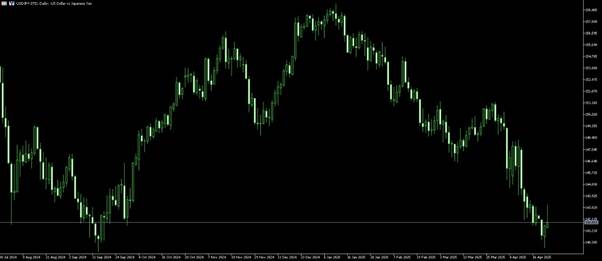
Fig.5: Daily Chart of the USDJPY showing the JPY strengthening against the USD since the start of the year
Indices
Global Indices have settled after they were initially hit hard when the tariffs took effect, posting their worst performances since the COVID pandemic. US indices were down more than 20% from their February highs, with the Tech Sector and the NASDAQ hit the hardest.
Whilst we have seen a slight recovery, and this week saw the US Treasury Chief, Scott Bessent, say that a deal with China was ‘’inevitable’’, concerns remain on Indices amidst fears of a global economic slowdown.
With that said, further noises from the Trump administration admitting that tariffs would ‘’eventually come down substantially’’, have promoted hopes that there will be a negotiated agreement between the two world’s largest economies of some sort in the future.
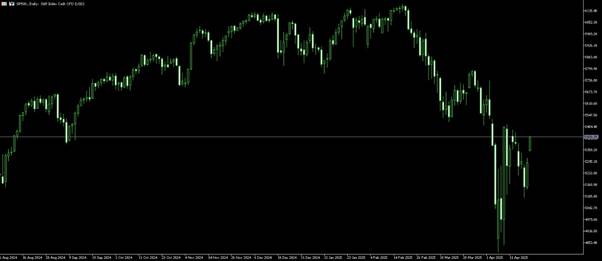
Fig.6: Daily Chart of the SPX showing its sharp sell-off of over 20% since the middle of February
Manufacturing
The manufacturing industry was one of the hardest hit by the tariffs as it had a massive impact on global supply chains. The sector relies heavily on imported parts to manufacture its products and therefore cost of production has gone up substantially. The Automotive industry was one of the hardest hit, as the US administration aims to reduce imports from abroad to encourage an increase in demand for domestically made cars. Elon Musk promised Tesla would double domestic production to encourage this.
Retail
A lot of products in this sector are imported from Asia due to production costs being much lower. Margins are very small and leave very little room for manoeuvre so any increase in cost will have to be passed onto the consumer. This has potential impacts on inflation and a drop in sales and consumer spending.
Agriculture
Agriculture was one of the sectors that was hit hardest by retaliatory tariffs and is heavily reliant on exports to other markets that were hit with some of the heaviest tariffs, such as China, Canada and the EU.
If demand decreases, even briefly in the short-term this can create a lot of waste of farm produce, having a massive impact on farm incomes and increasing the potential need for Government subsidies.
Pharmaceuticals
Another sector that relies heavily on markets that were hit with some of the heaviest tariffs, namely India and China, is the pharmaceutical sector. With tariffs causing supply chain disruption and regulatory issues regarding resourcing vital ingredients, the impact on availability of critical medicines is a major concern on top of inflation and increased costs.
Pharmaceuticals is a big part of both the Indian and Chinese economies as well, so the knock-on effects globally, even for a slight disruption in supply chains can be significant.
Tech
The Tech sector was one of the hardest hit as it also has geopolitical implications. The US and China compete for dominance on innovation and AI. It is a sector where production is extremely integrated globally and tariffs on parts and components will have an increase in production costs, which will be passed onto the consumer creating inflationary pressures.
Any disruption in this sector can also slow down innovation with reduced cross-border collaboration which can slow down the development of technologies such as AI and Green Tech.
Crypto
Bitcoin suffered initially, as uncertainties left investors running for the cover of safe-haven assets and to a more risk-off sentiment away from riskier assets, including cryptocurrencies.
Bitcoin however, has recovered after the 90-day pause on tariffs was announced. The long-term outlook for Bitcoin remains fairly strong, as some see Bitcoin as a potential hedge against a weakening of the USD and traditional financial risks
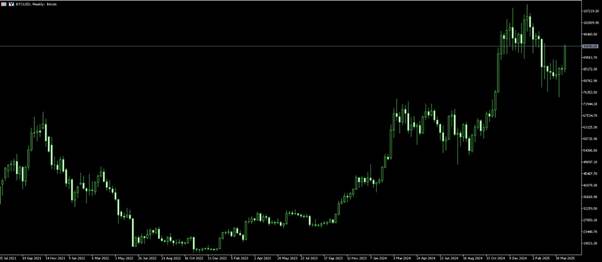
Fig. 7: Weekly Bitcoin chart showing it still looks strong despite the recent sell off amid geopolitical uncertainties









